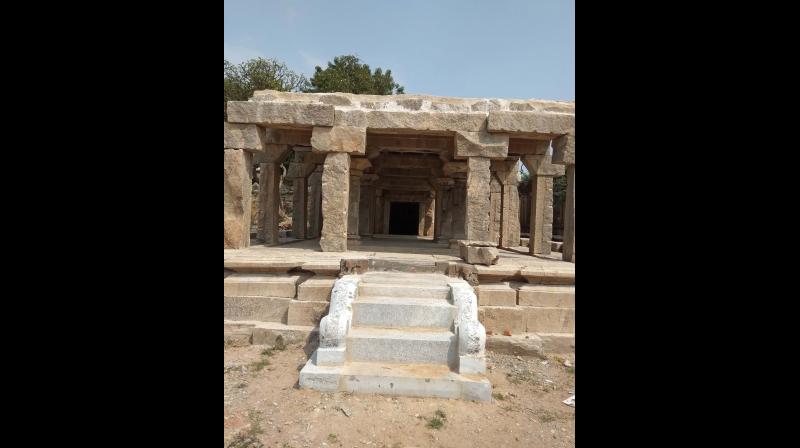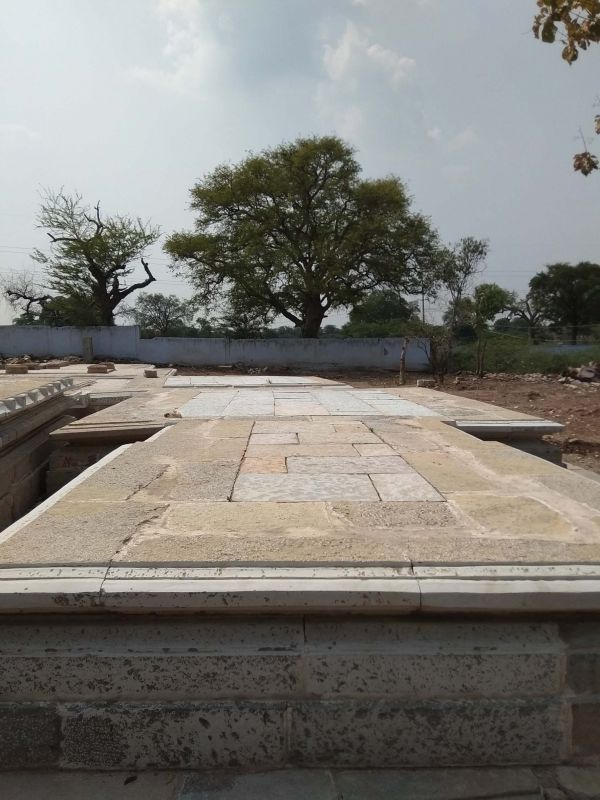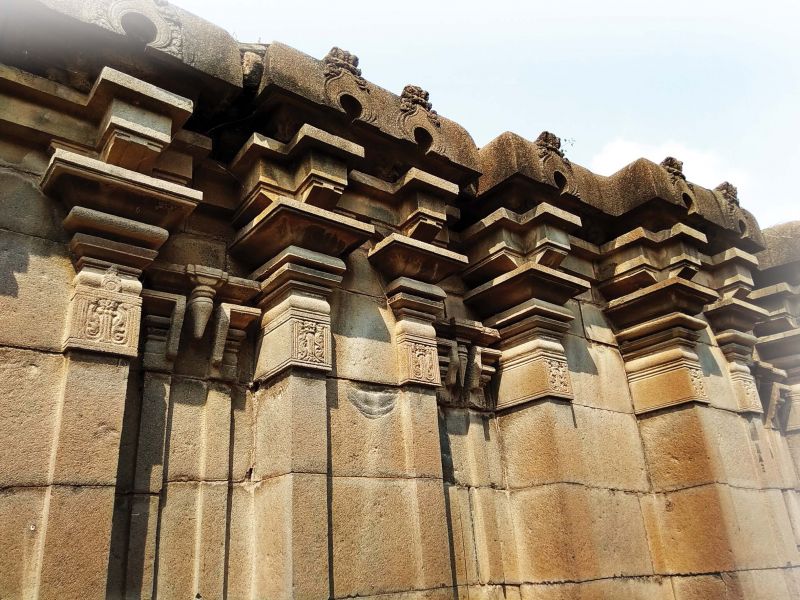Sunday story: A second Hampi in land of Rashtrakutas
The officials have identified at least five temples in the village which need to be transplanted to a place elsewhere.

A thousand years ago, a magnificent empire stretching from the river Narmada in the north to Cauvery in the south, from the Arabian sea in the west to Andhra in the east, flourished with its capital at Manyakheta (the present day Malkhed in Sedam taluk) . The greatness of the Rashtrakuta dynasty can be imagined if one sees the hauntingly beautiful ruins which dot the banks of river Bhima, at Sirival village near Shahapur in Yadgir. There are as many as forty six monuments here, mainly temples, mathas, koshthagaras (store houses) and wells with the resplendent structures reminding one of a glorious age in Karnataka’s history from the 8th to 10th century. K.N. Reddy visits these villages which were once power centres where kingdoms clashed for land and treasures, where every piece of land has a story of its own to tell.
“Oh, what a wonderful place! This looks like another Hampi”, was how officials from the Directorate of Archaeology and Museums in Bengaluru and Mysuru reacted when they saw the magnificent monuments at Sirival village. This happened way back in 1985 when the officials were deputed to conduct a preliminary survey of the area, before the construction of a barrage across the Bhima at Sannati. They were awestruck by what they saw.
When a detailed survey was carried out in 1987, it was found that Sirival had a large group of monuments belonging to the Rashtrakuta period including Siddalingeshwara temple, Sugnaneshwara temple, Nandayya temple, Nannayya temple, Mallikarjun temple, Isvara temple and Kadambeshwara temple. Considering the large number of temples the town had, it was often described as ‘Dakshin Varanasi (southern Varanasi) and also as Dharmada Mane (home of temples). Experts say that if a proper excavation is carried out, many more historic treasures hidden under the debris may come to light.

Sirival is situated about 10 km north-east of Shahapur and on the other side of the Bhima is Sannati, the famous Buddhist site. It was in this region that the Rashtrakutas ruled and thrived in what was considered the largest of the ancient kingdoms of south India.
The age of the Rashtrakutas saw art and culture reaching its zenith. For instance, the Kavirajyamarga by Shri Vijaya, the first work in Kannada poetry, is generally ascribed to king Nrupathunga of this dynasty. Sirival continued to be an important town during the rule of the Chalukyas of Kalyana too. One of the inscriptions found at the place in 1187 AD, gives a lengthy description of the miracles of Revanasiddha, a famous Veerashaiva saint, whose feet were washed before donations were made to the Siddheshwara temple, now known as Siddalingeshwara temple in Sirival. The archaeological remains at the site indicate that Sirival was continuously inhabited at least from the Rashtrakuta period till the modern age.
It was widely believed that the Rashtrakutas constructed more temples in Ellora in Maharashtra but this view has to be altered after as many as 43 monuments were found at Sirival.

What has left archaeologists surprised are the different types of plans adopted for building the temples Most of them have a garbhagriha, an antarala and a sabhamantapa. The majority of the temples which are now in a dilapidated condition, are dedicated to Lord Siva while one is dedicated to Surya and another to the Jain faith. The sculptural representations indicate that Vaishnavism too played an important role during this period. Among the sculptures, there are some depicting stories from the Panchatantras.
Conservation work is now in full swing utilising both Central and state grants with the restoration of the Nannayya, Nadayya and Sugnyaneshwara temples complete. Concrete has been laid around the basements of eight monuments. “In so far as the superstructure of these monuments is concerned, we have no definite knowledge what type of pillars and roofs existed as many stones were taken away from these structures and used for constructing a weir across the small rivulet flowing nearby” said an engineer of the Archaeology Department associated with the project.
In fact many houses, storehouses and even toilets in the villages nearby are built using stones removed from these monuments while in some places, the temples themselves have become dwelling places.
The officials have identified at least five temples in the village which need to be transplanted to a place elsewhere. “We can even set up a museum and install them there”, says an officer.
There is no paucity of funds for the restoration work but a lot more vigil is needed to make sure these structures continue to exist and enthral future generations. “There are no security personnel around to guard these monuments. An office of the deputy director needs to be set up here immediately failing which all the conservation work that has been carried out will go waste”, said an official.
Sirival and its monuments ignite in us nostalgia for a bygone age, when devoid of the complexities of modernity, people lived and enjoyed every moment of their simple lives, farming and toiling for their families and turning warriors when their land demanded it. And even as they sweated and laboured, they chiselled their dreams into granite and stone, leaving sculpted beauties behind which would leave anyone wonderstruck about the grandeur of those times.
Generations a millennium away and archaeologists, can only stop and wonder in awe about the dreams of these people and the vision of their rulers who left a treasure trove of history for any Indian to be proud of.
Sannati & Sirival: Tourist hub in the making
Sannati and Sirival, situated on opposite sides of the river Bhima, and nearby Shahpur town, can become a tourist hub if proper attention is paid to them. There are many Buddhist monuments here, not to mention the famous Chandralaparameshwari Temple at Sannati. There is also a barrage at Sannati across river Bhima, which can be developed for water sports. Shahapur town has some ancient temples and is also famous for the Sleeping Buddha monument.

